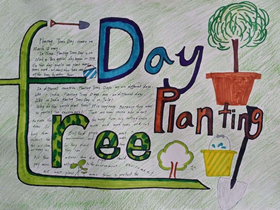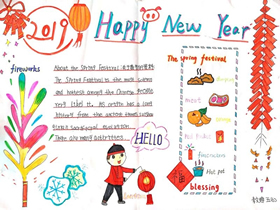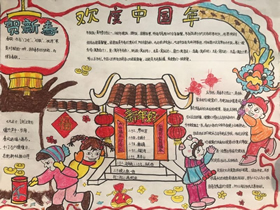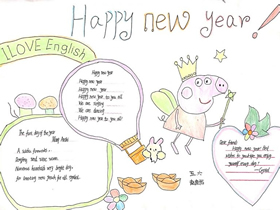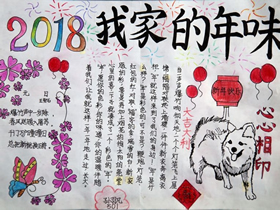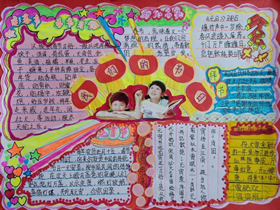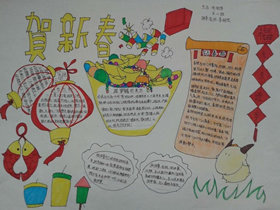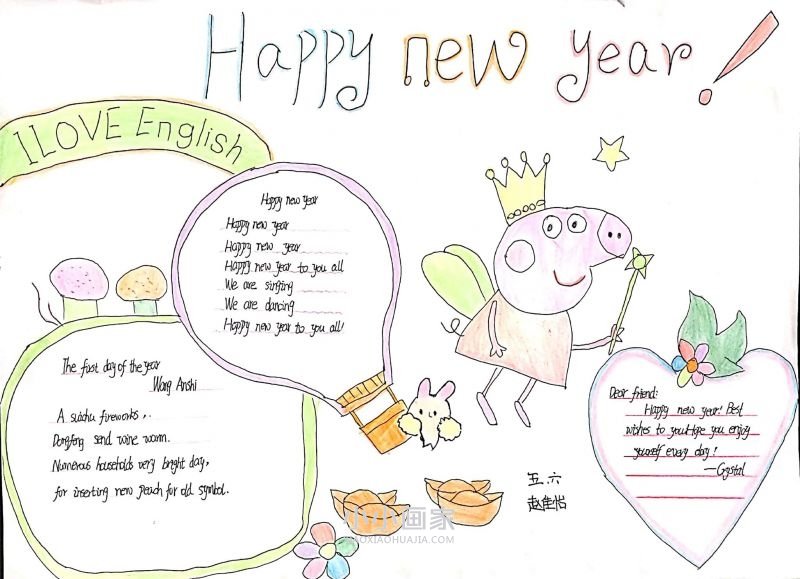
Chinese Spring Festival, also called Lunar New Year, has more than 4,000 years of history. Being one of the traditional Chinese festivals, it is the grandest and the most important festival for Chinese people. It is also the time for the whole families to get together, which is similar with Christmas Day to the westerners. Originating during the Shang Dynasty (about 17th - 11th century BC), Spring Festival, which celebrates family reunion, is full of rich and colorful activities, and hopes with the advent of spring and flowers blossoming. People from different regions and different ethnic groups celebrate it in their unique ways.
中国的春节,也被称为农历新年,迄今已有四千多年的历史。对于中国人来说,这是规模最大,最重要的传统节日。就如同西方的圣诞节一样,春节是一家团聚的日子。春节起源于商朝(公元前11-17世纪),为了庆祝全家团圆和表达对春暖花开的期盼,节日期间会准备丰富多彩的活动。不同地区和不同少数民族人们会用自己独特的方式庆祝这一传统节日。

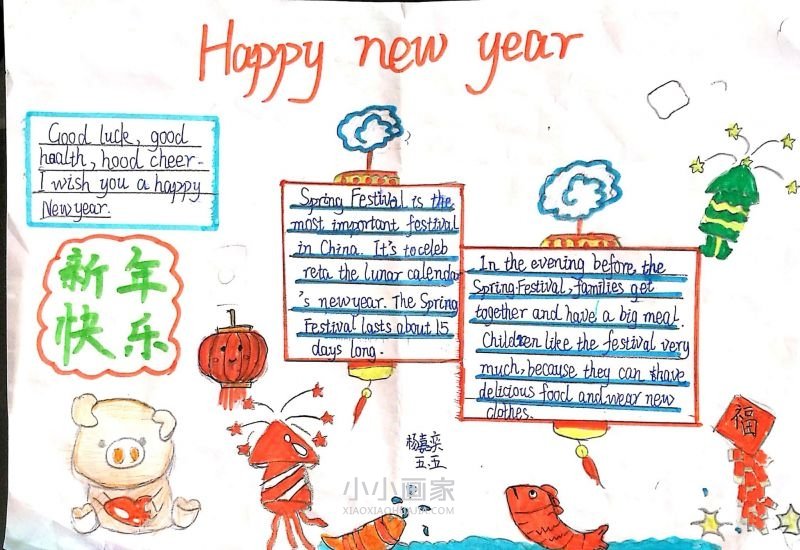
Festival Food 节日美食
Food during this happy event has its characteristics, which is the representative of Chinese festival food culture. Dumplings and the reunion dinner are indispensable at this time. Cold and hot dishes are all served. Fish is always an important dish then, which expresses people’s hope of having a wealthy year.
春节期间的食物也很有特色,代表着中国传统饮食文化,饺子和团圆饭是不可或缺的,冷盘热菜都得上,鱼也是春节一道重要的菜肴,它代表了人们年年有余的期望。

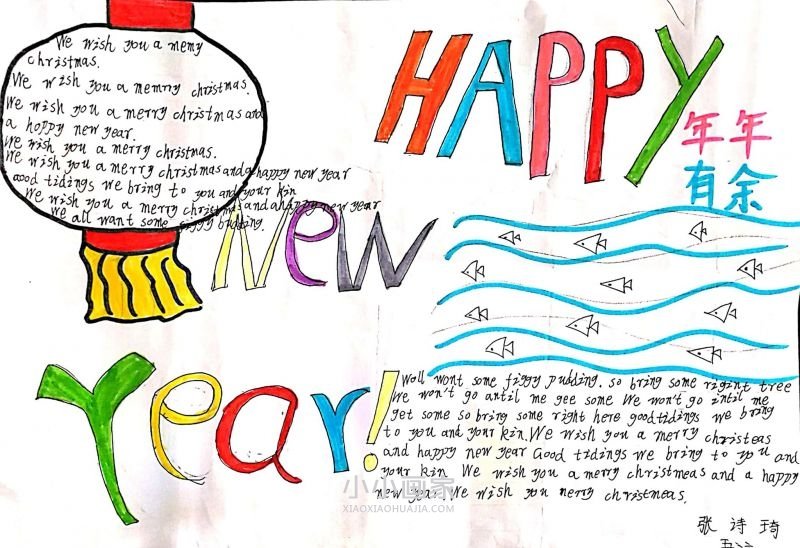
Legends 春节传说
There are many legends about Spring Festival in Chinese culture. In folk culture, it is also called “guonian” (meaning “passing a year”). It is said that the “nian” (year) was a strong monster which was fierce and cruel and ate one kind of animal including human being a day. Human beings were scared about it and had to hide on the evening when the “nian” came out. Later, people found that “nian” was very scared about the red color and fireworks. So after that, people use red color and fireworks or firecrackers to drive away “nian”. As a result, the custom of using red color and setting off fireworks remains.
中国文化中有很多关于春节的传说。在传统文化中,春节亦被称为“过年”。传说“年”是一种凶猛异常的怪物,每天都会吃一种动物(包括人)。人们非常惧怕他,当“年”夜间出来活动时,人们会找地方躲起来。后来,人们发现“年”非常害怕红色和爆竹,于是,人们用红色和鞭炮来驱赶“年”。久而久之,春节用大红色和放鞭炮的习俗就保留了下来。

#p#分页标题#e#
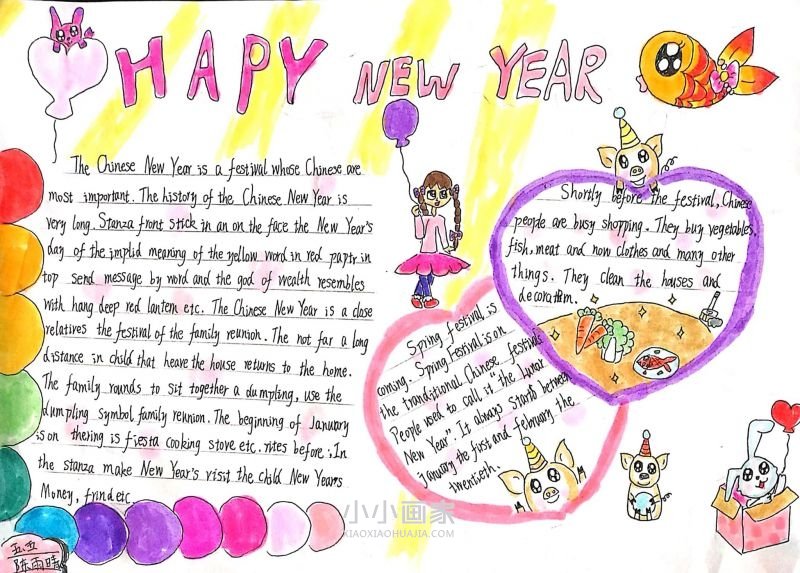
新 春 佳 节
1. 传统中国节日:traditional Chinese festival
2. 农历:lunar calendar
3. 腊八节:Laba Festival
4. 小年:Little New Year
5. 除夕:Lunar New Year's Eve
6. 春节:the Spring Festival
7. 正月初一:Lunar New Year's Day
8. 元宵节:the Lantern Festival
9. 正月:the first month of the lunar year
10. 二月二:Dragon Heads-raising Day
传 统 习 俗
11. 喝腊八粥:eat Laba porridge
12. 扫尘:sweep the dust
13. 扫房:spring cleaning
14. 祭灶:offer sacrifices to the God of Kitchen
15. 守岁:stay up
16. 拜年: pay a New Year's call
17. 祭祖:offer sacrifices to one's ancestors
18. 祭财神:worship the God of Wealth
19. 春联:Spring Festival couplets
20. 贴倒福:paste the Chinese character "Fu" upside down
21. 去晦气:get rid of the ill-fortune
22. 辞旧岁:bid farewell to the old year
23. 兆头:omen
24. 禁忌:taboo
25. 烧香:burn incense
阖 家 团 圆
26. 吃团圆饭:have a family reunion dinner
27. 年夜饭:New Year's Eve dinner
28. 全家团圆:family reunion
29. 办年货:do Spring Festival shopping
30. 敬酒:propose a toast
31. 穿新衣:wear new clothes
32. 红包:red envelops
33. 压岁钱:gift money;money given to children as a Lunar New Year gift
美 食 小 吃
34. 年糕:rice cake;New Year cake
35. 饺子:dumplings;Chinese meat ravioli
36. 汤圆:dumplings made of sweet rice
37. 八宝饭:eight-treasure rice pudding (steamed glutinous rice with bean paste, lotus seeds, preserved fruit, etc.)
38. 什锦糖:assorted candies
39. 糖莲子:candied lotus seed
40. 花生糖:peanut candy
41. 蜜冬瓜:candied winter melon
42. 瓜子:red melon seeds
43. 金桔:cumquat
44. 红枣:red dates
45. 春卷:spring roll
46. 冰糖葫芦:candied haws on a stick
47. 驴肉火烧:donkey burger
48. 腊肠:Chinese sausage
49. 米酒:rice wine
50. 腊肉:preserved meat
51. 糖板栗:sugar chestnut
52. 四喜丸子:four-joy meatballs
民 间 艺 术
53. 泥人:clay figure
54. 皮影戏:shadow puppetry
55. 木偶戏:puppet show
56. 刺绣:embroidery
57. 剪纸:paper-cut
58. 中国结:Chinese knot
59. 年画:New Year painting
60. 吹糖人:sugar-figure blowing
61. 舞龙:dragon dance
62. 舞狮:lion dance
63. 秧歌:Yongko dance;rural folk dance
64. 灯笼:lantern
曲 艺 表 演
65. 戏曲:traditional opera
66. 折子戏:opera highlights
67. 相声:comic dialogue;cross talk
68. 小品:skits;sketch
69. 口技:vocal imitations;ventriloquism
70. 杂技:acrobatic performance
71. 马戏:circus performance
72. 京韵大鼓:drum song of Peking
73. 踩高跷:walk on stilts
74. 杂耍:variety show;vaudeville
娱 乐 活 动
75. 打麻将:play mahjong
76. 庙会:temple fair
77. 春节联欢晚会:Spring Festival gala
78. 灯会:exhibit of lanterns
79. 送贺卡:send New Year's greeting cards
80. 理发:have a haircut
81. 放烟花:set off fireworks
82. 放鞭炮:set off firecrackers
83. 灯谜:riddles written on lanterns
各 路 神 仙
84. 门神:the God of Door
85. 灶神:the God of Kitchen
86. 财神:the God of Wealth
87. 土地爷:the God of Land
88. 火神:the God of Fire
89. 喜神:the God of Happiness
90. 福禄寿三星:the three gods of fortune, prosperity and longevity
91. 八仙:the Eight Immortals
其 他
92. 生肖、属相:Chinese zodiac
93. 猴年:the Year of the Monkey
94. 微信红包:WeChat red envelope
95. 年:Nian;Year monster
96. 立春: Start of Spring
97. 24节气:24 Solar Terms
98. 本命年:the animal year in which one was born
99. 春运:Spring Festival travel rush
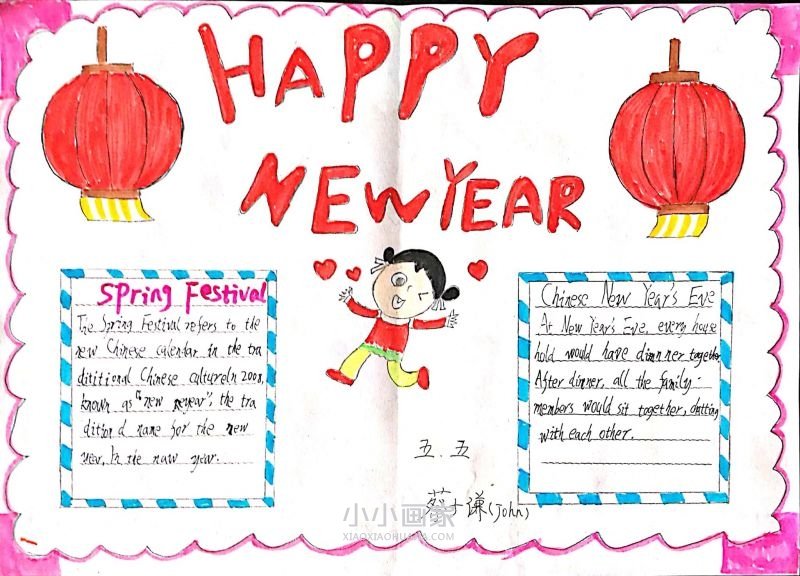
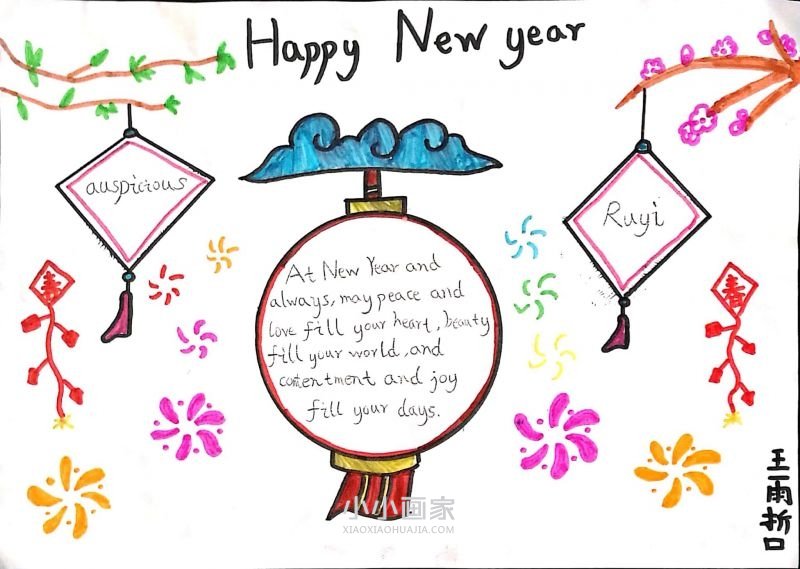
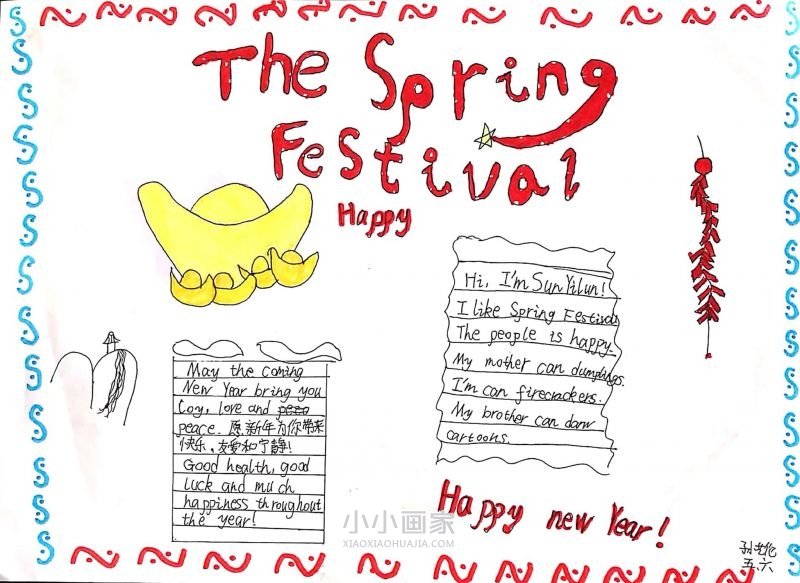
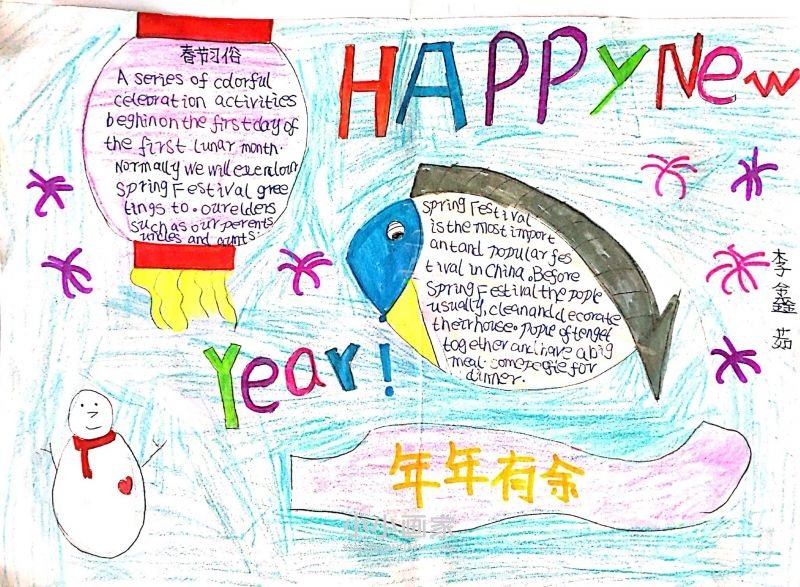
 儿童画画图片大全
儿童画画图片大全